|
CYMRU LAND OF SAINTS AND HEROES Tan Wee Cheng's journey through the history & culture of Wales |
|
CYMRU LAND OF SAINTS AND HEROES Tan Wee Cheng's journey through the history & culture of Wales |
The
Invaders Arrive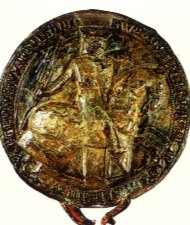
"Put two Welshmen together and you always get three points of view."
Old saying.
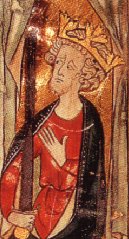 After
Christmas, a few of us rented a car for a week of Welsh escapade.
On the way to the Welsh capital Cardiff, we made a little detour
to pleasant little Bath (of Roman baths fame) and Bristol (the
largest English city in the West of England \endash once a great
port but not much on off er to the tourist of today) before
reaching the Severn River, which forms the southern border
between Wales and England. As we drove across the Severn Bridge,
it suddenly dawned to us that we were entering a different
country. Certainly not an internationally-recognised political
entity, but a separate cultural territory. Wales is one of the
four "countries" of the UK (others are England,
Scotland and Northern Ireland) and the only one apart from
England where its native tongue is flourishing. Indeed, we were
greeted by bilingual signs the moment we entered Cymru
After
Christmas, a few of us rented a car for a week of Welsh escapade.
On the way to the Welsh capital Cardiff, we made a little detour
to pleasant little Bath (of Roman baths fame) and Bristol (the
largest English city in the West of England \endash once a great
port but not much on off er to the tourist of today) before
reaching the Severn River, which forms the southern border
between Wales and England. As we drove across the Severn Bridge,
it suddenly dawned to us that we were entering a different
country. Certainly not an internationally-recognised political
entity, but a separate cultural territory. Wales is one of the
four "countries" of the UK (others are England,
Scotland and Northern Ireland) and the only one apart from
England where its native tongue is flourishing. Indeed, we were
greeted by bilingual signs the moment we entered Cymru
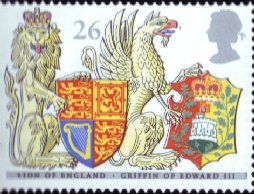 As I cross the river, I
remembered the story (in Peter Sager' s Wales) about a birth in
the border village of Brilley, in a house that is half in England
and half in Wales. In order that the child have the best possible
start in life, it is to be born in England, and so the mother
gave birth in the English corner of the house. Such was the
status of Wales for many years after its conquest by England. It
briefly enjoyed a period of wealth w hen the coal mines of the
south were busy supplying the warships of the British Empire on
their way to conquer the world. This was not to last, as the 20th
century brought oil-powered vessels and planes. And so Wales
slipped into obscurity again, only to emerge again in recent
years as a popular investment destination for foreign
manufacturers.
As I cross the river, I
remembered the story (in Peter Sager' s Wales) about a birth in
the border village of Brilley, in a house that is half in England
and half in Wales. In order that the child have the best possible
start in life, it is to be born in England, and so the mother
gave birth in the English corner of the house. Such was the
status of Wales for many years after its conquest by England. It
briefly enjoyed a period of wealth w hen the coal mines of the
south were busy supplying the warships of the British Empire on
their way to conquer the world. This was not to last, as the 20th
century brought oil-powered vessels and planes. And so Wales
slipped into obscurity again, only to emerge again in recent
years as a popular investment destination for foreign
manufacturers.
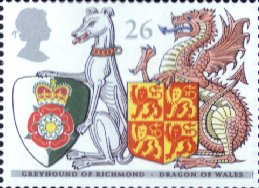 It was from the south that we began our
journey - this was also where the English first invaded Wales.
Soon after their conquest of England, the Norman knights made
forays into southern Wales around 1070. Twenty odd miles east of
where we entered Wales was Chepstow on the River Wye, where the
first Norman castle in Wales was built in 1067 by Norman marcher
lord, William FitzOsbern. From then on, the Normans, and
subsequently the English, built a series of fortresses in
southern Wales, and soon extended these northwards, until they
eventually overwhelmed the fiercely independent, but deeply
divided principalities of Cymru.
It was from the south that we began our
journey - this was also where the English first invaded Wales.
Soon after their conquest of England, the Norman knights made
forays into southern Wales around 1070. Twenty odd miles east of
where we entered Wales was Chepstow on the River Wye, where the
first Norman castle in Wales was built in 1067 by Norman marcher
lord, William FitzOsbern. From then on, the Normans, and
subsequently the English, built a series of fortresses in
southern Wales, and soon extended these northwards, until they
eventually overwhelmed the fiercely independent, but deeply
divided principalities of Cymru.
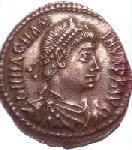 We passed the suburbs of the city of
Newport, Wales' third largest, with only 116,000 people. It's
purely an industrial city but four miles north of this city was
the ancient Roman fortress of Caerleon. Known as Isca then, it
was the headquarters of the Second Augustan Legion from 75 A.D.
to 290 A.D. Roman general Magnus Maximus withdrew troops from
Britain in 383 A.D. to help him win the Roman throne. The British
Isles was thus left to the natives. It is for this reason that
Welsh tradition regards him as a hero and the founder of Welsh
pri ncely dynasties.
We passed the suburbs of the city of
Newport, Wales' third largest, with only 116,000 people. It's
purely an industrial city but four miles north of this city was
the ancient Roman fortress of Caerleon. Known as Isca then, it
was the headquarters of the Second Augustan Legion from 75 A.D.
to 290 A.D. Roman general Magnus Maximus withdrew troops from
Britain in 383 A.D. to help him win the Roman throne. The British
Isles was thus left to the natives. It is for this reason that
Welsh tradition regards him as a hero and the founder of Welsh
pri ncely dynasties.
![]() Cardiff
- Europe's Newest Capital.....To
The Land of Saints: Across Glamorgan & Pembrokeshire.....St
David's - Saints & Pilgrims.....Mid-Wales:
Heroes & Crosses.....Snowdonia
(Eryri) & Gwynedd - the Real Wales.....Stones,
Statesmen, 10,000 Saints & a Mysterious Isle.....Of
Spirits & Castles
Cardiff
- Europe's Newest Capital.....To
The Land of Saints: Across Glamorgan & Pembrokeshire.....St
David's - Saints & Pilgrims.....Mid-Wales:
Heroes & Crosses.....Snowdonia
(Eryri) & Gwynedd - the Real Wales.....Stones,
Statesmen, 10,000 Saints & a Mysterious Isle.....Of
Spirits & Castles